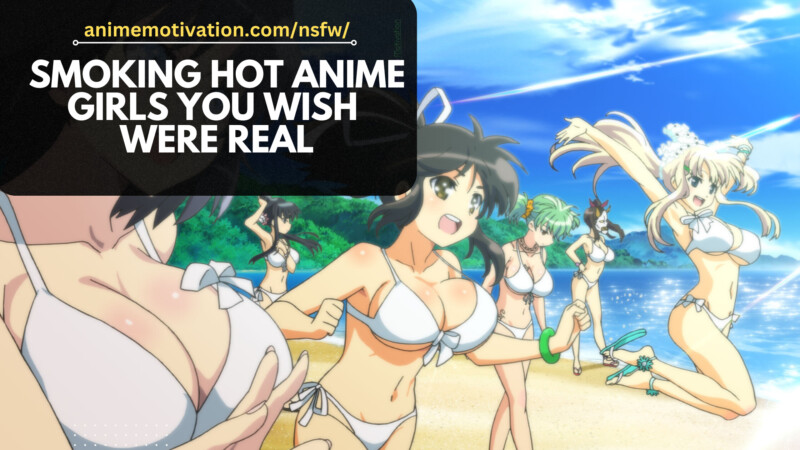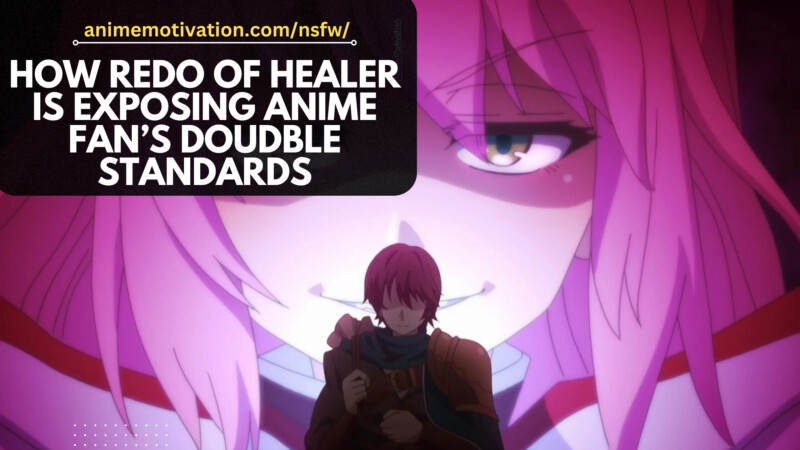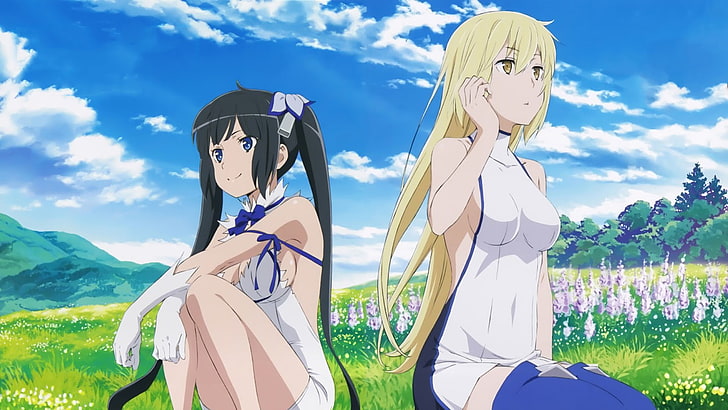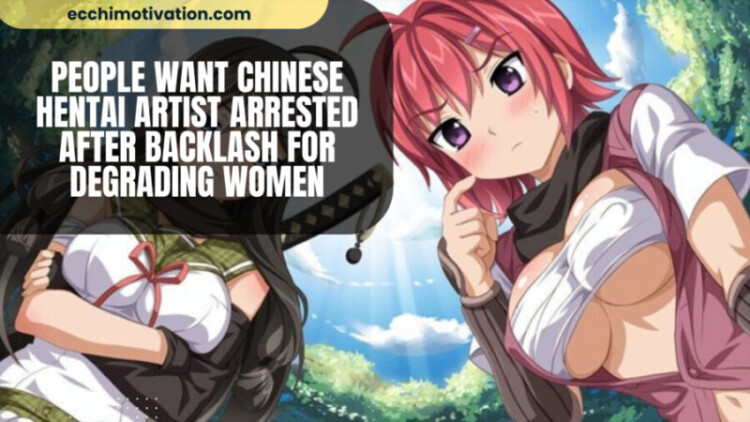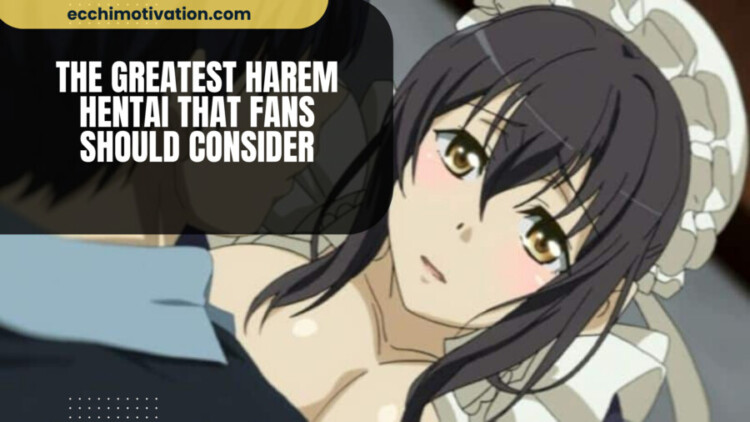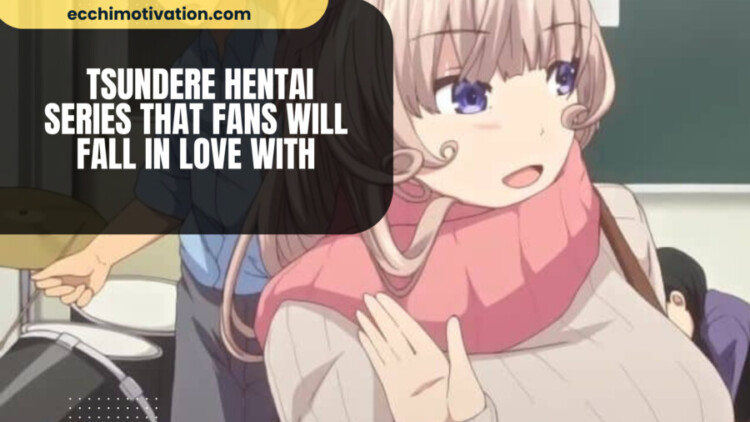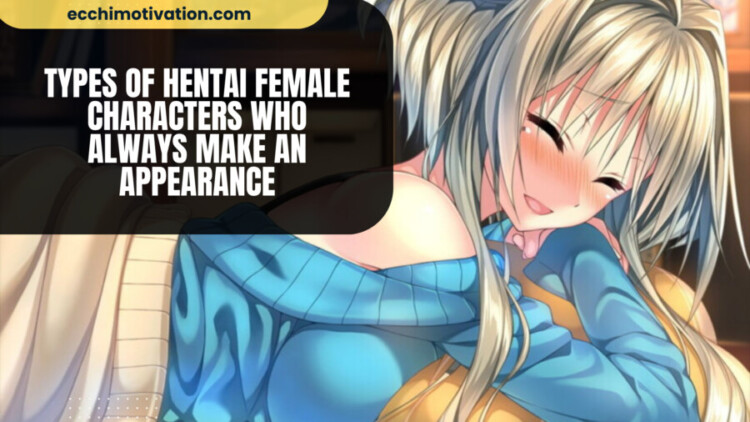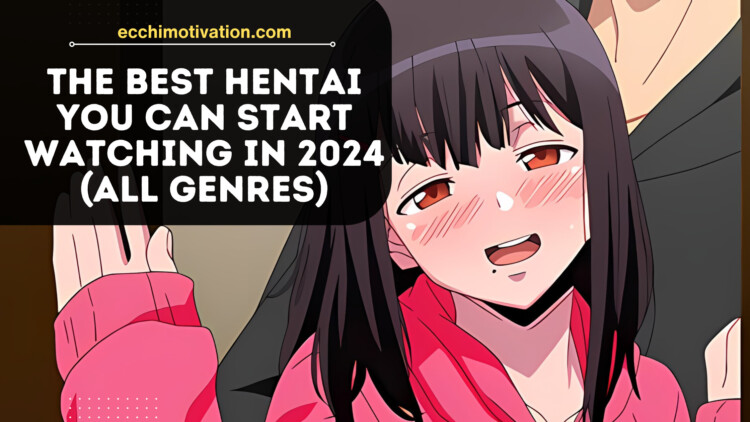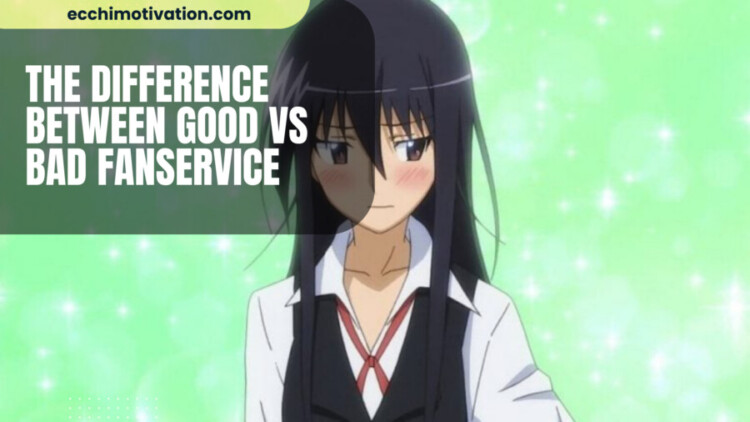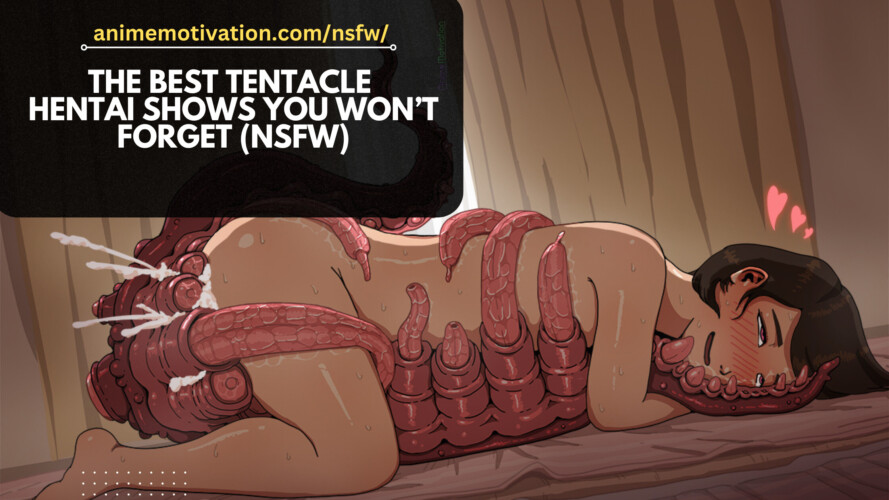Anime taboos on the surface look like this:
- Common sense.
- Logic.
And don’t appear to be taboos at all. But once a person admits or is fond of these “taboos”, it becomes clear why these things are taboos in practice because of how fans are treated as a result.
Some of them are hypocritical and benefit from a double standard as well.
They are taboos in the sense that outsiders, and sometimes “insiders” claim these things are bad in some way shape or form.
Let’s talk about it.
These perspectives are mostly from outside of Japan, like Western countries.
1. Female fanservice

There is a reason I said “female fanservice”. When you think about all the:
- Controversies.
- Outrage.
- Drama.
And censorship (attempted censorship) over the years, always comes back to female fanservice.
Let’s start with social media.
When a woman is seen with “skin”, even if it’s a little and even if it’s in context, outrage is bound to follow.

We saw this with My Hero Academia. Both when MOMO was on screen, and also when Invisible Girl was revealed in human form at the front of a NEW manga cover.
This continued with Nagatoro, despite the accusations being unfounded. And of course, websites like Anime Feminist and Mary Sue wrote “think” pieces about anime fanservice, sexism, misogyny, and all the other buzzword bullshit.

There was also the case of South Korea censoring Marin Kitagawa from My Dress Up Darling, which made her ironically look more LEWD than she originally would have without the double standard.
Indonesia and other countries have followed suit in many comical controversies over the years that show “female fanservice”< anime or otherwise) is rooted in hypocrisy.

When male fanservice shows up on-screen, somehow, some way, not only do the same critics sexualize these men and boys while fantasizing and drooling over their bodies, but they also stay VERY silent until it’s the other way around.
This was indicated when a female translator from the USA had a rant on Twitter about Shonen and women, despite her own interests (and the interests of those who agreed, which is a love for Yaoi).
Of course, this anime taboo is outside of Japan.
Within Japan, they don’t fret over small details or cry over one body being shown a certain way, despite BOTH genders getting similar treatment.
2. Violence against women in anime
This is another anime taboo rooted in deep hypocrisy.
Violence against women in the real world is an obvious issue. No one should or could debate that unless they have a problem with women.
Violence against men in the real world is a big problem as well. But in anime, manga, or hentai, which are fictional pieces of art, this concept is irrelevant.

Take an anime like Sword Art Online as an example. This series has been criticized multiple times for its controversial content involving women and violence.
Especially in the context of using women as a “plot” device.
It caused outrage, predictably, and started discussions on Twitter and beyond.

The anime Redo Of Healer also highlights this aspect, but before it does, it shows WHY the male MC decides to inflict harm on women at all.
That reason is revenge. A woman in question r*ped, abused, gang r*ped, molested, drugged, and so much more to a young and impressionable main character. So his hatred is justified, given the context.
Regardless, the usual hypocrites demonized this anime once the male “violated” the woman, but not beforehand, when the man himself (a teenager) was violated by both women and men combined.
To highlight this double standard even more, think about the number of anime shows that are dedicated to violence, where MEN are the usual victims of this violence and women are “protected” from this violence.
Or when women play a role in abusing the male characters for humour, comedy, shits and giggles. Many times for reasons like the MC daring to “look” at a girl or glance, leading to several punches and verbal abuse.
Why is male violence OK but female violence not? More importantly, why should any of this matter in a fictional world that’s telling a fictional story?
Why is it an issue when nobody in the real world is being harmed, be it the voice actors, the writers, the audience, the directors, or anyone else?
There is only one answer: hypocrisy.
3. Women being stereotypically attractive
This follows closely with the point about female fanservice.
Anime is fictional. Nothing about it is real and shouldn’t be taken as a real example of what life should be like (ignoring exceptions).
Let’s focus on women for a second.
In anime, you can expect to see women look stereotypically attractive to this degree. Whether they have overly sized tiddies, a big ass, or whether they’re slim, skinny, shaped, a Coca-Cola bottle, whatever.
They tend to be drawn in a way that is stereotypically attractive, regardless of which “norms” those beauty standards are being drawn from.
Momo from My Hero Academia is a good example. For some weird reason, she was criticized to death in the earlier stages of MHA.
The reason is that she is attractive, even if fictional. This wouldn’t be an issue otherwise.

But why is it that when MEN in anime are also stereotypically attractive, nobody comes out of their houses with pitchforks, knives, shotguns, and weapons to demand “justice” and “equality”?
Why is it that there is never any outrage when Fairy Tail, an EQUAL anime with its stereotypically attractive men and women, decides to make its characters “hot” in compromising positions?
Of course, these are rhetorical questions because the answer is HYPOCRISY yet again.
It’s a double standard that pretends to be noble when it’s really disgusting at its core.
4. Fale r*pe accusations

We see this when the anime The Rising Of the Shield Hero aired in 2019, a very volatile year for the anime community in general.
It was the year Vic Mignogna was accused (despite no police reports or anything).
Shield Hero is about Naofumi Iwatani, a black haired protagonist who enters a new world (forced) and is greeted by a red haired woman called Myne.
A princess in her own right, she seemingly falls for Naofumi, and they both hang out together. He, a fool, thinks she’s into him, only to find out later she intentionally sets him up and falsely accuses him of rape.
This destroys his reputation, and almost nobody wants to hear his side of the story, causing him to be depressed, angry at the world, closed off, and reclusive.

This FACT seemed to anger many pretentious snobs and fake anime fans who claimed the anime is misogynistic, it’s for incels, and every other buzzword, because it highlighted a real issue: false accusations against men.
The anime wasn’t cheap in its delivery either, but the point is how hypocritical it was to attack men for highlighting an issue that affects men, despite it all being fictional and the fact that it would never be an issue the other way around.
5. So called Loli’s
Loli’s in anime are another form of taboo and hypocrisy, depending on where you look. While there is a disgusting side to this community, which I’ll cover in a separate post, let’s focus on the point.
The point is double standards.

Loli’s are little girls in anime. Plain and simple. They can be as young as 5, 6, or 9 years old, all the way to 18 years old or even 1000 years old.
If a character is a regular human, they will be anywhere from 6 to 40, with the 6 to teenage-year-old character being innocent or “cute”, and the 40 year old looking so good for their age they appear to be a teenager.
When they’re not human, they can be 300 years old and appear to be a teenage girl.
Oftentimes, these “Lolis” are criticized, and people are called PEDOS for even mentioning or entertaining the thought of a character that is nothing more than innocent, no different from having your own niece or younger sister.
Whenever an anime is announced with this type of character, comments like “pedo” and similar comments are pointed towards anime fans and the community at large.

What about when the shoe is on the other foot? When a BOY is on screen who is also cute, innocent, childish, or whatever else?
For example, when DEKU as a kid shows up on screen, or when you see a flashback of a popular protagonist as a toddler or 8 year old?
You can already guess where that goes.
The short answer is nobody gives a shit.
This image unintentionally explains why

The messed up thing about this double standard is even when anime fans who draw “fanart” sexualize these characters, which is a whole other topic, nobody says a word when it’s the BOYS being depicted.
Only when it’s a female character.
The term for these “young” boys is Shota.
6. Hentai content

This goes without saying. Hentai is controversial, famous, and even more popular than every famous celebrity you can think of.
Even if you combined A list celebrities together, it’s STILL not as popular as Hentai.
So why is this considered a taboo that is rooted in hypocrisy?
Simple.
- If it happens to women, it’s fine.
- If it happens to men, who cares.
This is essentially the point of the post in a nutshell, though not quite.
For some reason, a woman getting her backdoors smashed in evokes a strong reaction. Especially if it’s exaggerated (which it is) and especially if it involves extremes like BDSM and fetish material.
But again, in the case of material where the “guy” is on the receiving end, meaning the receiving end of a fetish, it’s not that big of a deal.
Of course, we’re talking about how hentai is perceived OUTSIDE of Japan, and especially in the West.
7. Cute and kawaii anime girls
And lastly, there is the idea of anime girls being cute and kawaii is somehow offensive. Believe it or not.
There have been articles written about MOE girls in anime and how it’s somehow misogynistic, and it’s a form of sexualization and all sorts of nonsense no rational person would ever say.
Only one who is bought and paid for and grandstands for whatever narrative is active to “play it safe” and stay in people’s good graces.

Look at these sisters from Hyperdimension Neptunia. They’re called Ram and Rom. What’s so sexist, misogynistic, or offensive about these cute twins being cute?
Am I missing something?

What about Rem and Ram from Re:Zero? These twin sisters are maids and have a sad backstory between them, but aside from that, is them being cute somehow offensive in reality?
Make it make sense!

Here are more “cute” and “Moe” girls from various anime shows.
Explain with logic how these girls are offensive, misogynistic, sexist, or tell me how in the world it is immoral and unethical.

When focusing on “cute” characters who are male, this is never the topic of discussion, outrage, controversy, censorship, or anger in general.
In fact, it never even comes up in conversation.
Even the United Nations never mentions MALE characters in anime. They’ve historically targeted female characters in anime and made all sorts of excuses that are borderline mental gymnastics.
Japan luckily refused to listen and told them to “fuck off” with their foolish ideas, in a nutshell.
This is the problem with double standards. There is never a logical explanation; it’s outright hypocrisy and nothing more.
–
In the end, anime taboos, similar to real life taboos, are rooted in double standards and narratives that benefit one group of people at the expense of the other group of people.
Luckily, in this case, these hypocrites have no control or influence over anime, manga, or hentai, so it can’t affect the industry in the way they’d like.
Recommended:
Why Anime Fanservice Offends So Many Westerners
Anime Sauce Finder
Tip: Use clear anime scenes or high-contrast manga/doujin pages. Avoid edits, memes, or blurred images for best results.
Note: Uploads must be under 10MB. Anime detection is highly accurate. Manga and doujinshi results may vary based on clarity and source availability.


